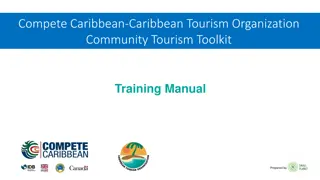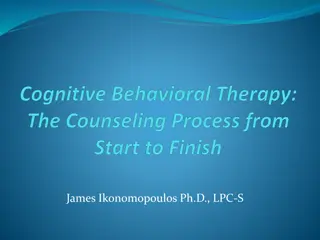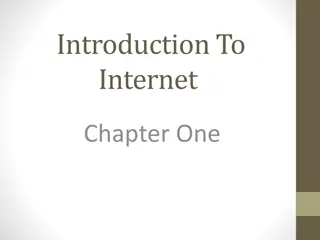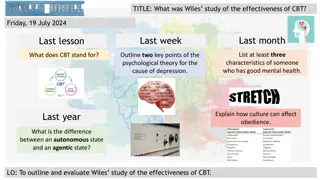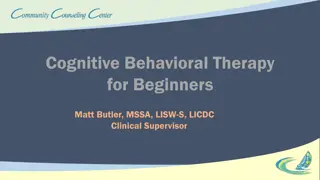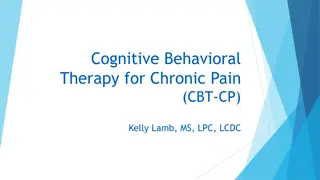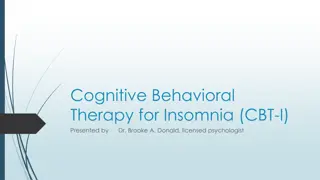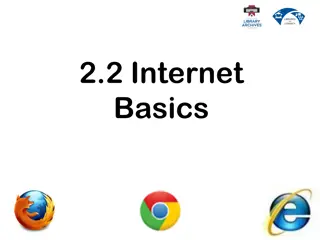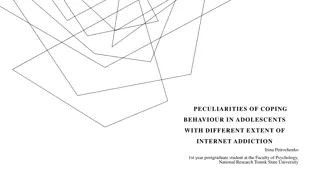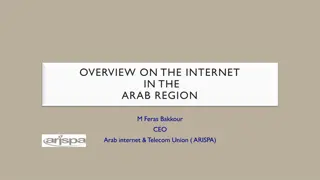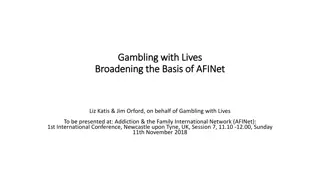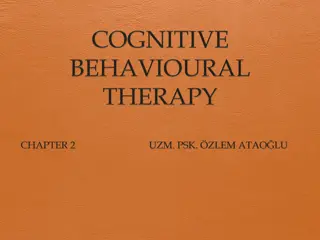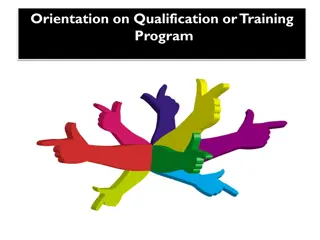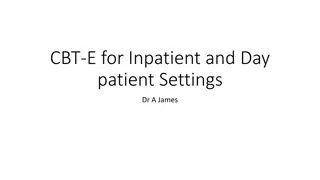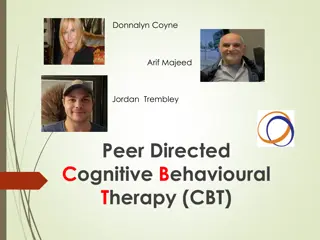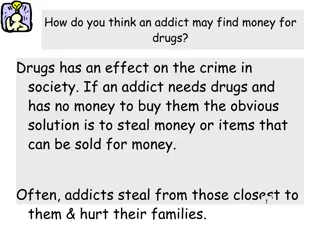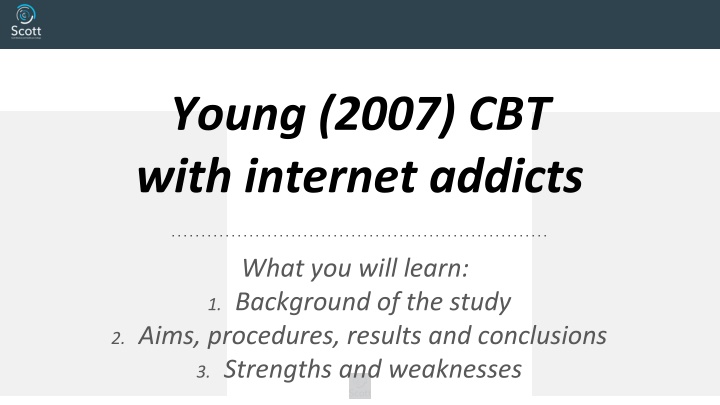
CBT for Internet Addiction Study: Understanding Young's Research
Explore the study by Young (2007) on using Cognitive Behavioral Therapy (CBT) for internet addiction, including aims, procedures, results, and conclusions. Discover strengths and weaknesses of the study and delve into symptoms of internet addiction. Engage in sorting tasks for detailed study summary and analyzing strengths and weaknesses of online CBT sessions for treating internet addiction.
Download Presentation

Please find below an Image/Link to download the presentation.
The content on the website is provided AS IS for your information and personal use only. It may not be sold, licensed, or shared on other websites without obtaining consent from the author. If you encounter any issues during the download, it is possible that the publisher has removed the file from their server.
You are allowed to download the files provided on this website for personal or commercial use, subject to the condition that they are used lawfully. All files are the property of their respective owners.
The content on the website is provided AS IS for your information and personal use only. It may not be sold, licensed, or shared on other websites without obtaining consent from the author.
E N D
Presentation Transcript
Young (2007) CBT with internet addicts What you will learn: 1. Background of the study 2. Aims, procedures, results and conclusions 3. Strengths and weaknesses
Starter Are you addicted to the internet? https://psychcentral.com/quizzes/internet- addiction-quiz/
Background to the study Key term CBT - cognitive behavioural therapy Internet addiction has only recently been classified as a mental health disorder, therefore not much is known about what treatments might work. Young has seen CBT being used effectively for other disorders and was interested in whether CBT could help internet addiction. Learning objective: to be able to understand and evaluate Young s study on CBT for internet addiction
Aim To investigate the effect of using CBT to treat patients diagnosed with internet addiction. To see how problem behaviours improved over time during the therapy and after the therapy. Task - Do some research and investigate exactly what symptoms are shown by patients with internet addiction. https://www.psycom.net/iadcriteria.html http://www.priorygroup.com/addictions/internet/internet-addiction-signs
Task - card sort In the envelope there are sentences that relate to: The procedure (How the study was done) The results (findings) The conclusion (a summary) 1. Sort the cards into 3 piles using the headings above. 2. Use this to add detail to your study summary sheet.
Task - Strengths and weaknesses Tells us that online sessions of CBT might be useful for treating people with internet addiction. The clients filled out their own questionnaires and may have lied. This means the data might not be valid. The same questions and rating scale were used throughout (at session 3, 8 and 12 of the CBT and after 6 months). It is consistent and standardised. Online CBT is good because some people might be too embarrassed to see a therapist face to face. Different types of internet addiction were identified. But it s not clear if the CBT was effective for each type. Asking internet addicts to use online CBT could contribute to their addictive behaviour. 1. Cut and sort into strengths or weaknesses 2. Stick or write them on your study summary sheet
Quiz 1. What year did Young do his study? 2. True or false - internet addiction has only just be recognised as a problem. 3. How many participants were used in Young s study? 113 or 114? 4. True or false - Young picked participants who has internet addiction and other mental health problems. 5. What were all participants given a course of? 6. What did the first session of CBT do? 7. What did the second session do? 8. True or false - Participants filled in a questionnaire during their 3rd, 6th and 12th online therapy session and again 12 months after the therapy. 9. How was the impact of CBT measured? 10.What did the results show?
Extension 1. Having now looked at our two key studies Caspi s and Young s - which do you think is best? Explain why? 2. Come up with 5 or more questions you could ask someone to see it they were addicted to the internet. 3. Summarise Young s study in 50 words or less.
Procedure 114 participants were taken from the Centre for Online Addiction (a website to help treat people with internet addiction in the USA) All had completed a Internet Addiction Test (IAT) and were shown to have an internet addiction.Young did not choose anyone who had any other psychological problem alongside their internet addiction. All the participants were given a course of online CBT. The first sessions focused on finding out info about the background (functional analysis) of the participant/client e.g. when their symptoms started, what kind of symptoms they had and how serious the symptoms were. The next lot of sessions helped the client to develop skills to treat the symptoms (skills training) e.g. strategies to reduce the amount of time spent online. The therapist also helped the client to solve other problems that could increase their internet usage e.g. problems at home, work or school. Participants filled in a questionnaire during their 3rd, 8th and 12th online therapy session and again 6 months after the therapy. The questionnaire (Client Outcome Questionnaire) measured how well the CBT was working. It included 12 questions where participants rated their behaviour and feelings on a 5-point likert-type scale. Questions included rate your ability to control your computer use and rate your ability to engage in offline activities away from the computer has improved . 1 = not at all, 5 = extremely good.
Results 58% of the participants were male, 42% female 61% were educated to university level 30% of males were addicted to pornography 30% of females were addicted to chat rooms Almost all (96%) said the biggest problem caused by their addiction was the time taken up by using apps The questionnaire also asked the participants about their attitude to their CBT sessions and their relationship with their therapist. Over the 12 sessions these ratings increased.
Goal Session 3 Session 8 Session 12 6 months after Motivation to stop using online apps 4.22 3.96 4.54 4.36 Time management in using online apps 3.95 4.06 4.33 4.22 Relationship function 2.95 3.66 4.42 3.99 Sexual function 2.15 2.99 3.26 3.16 Engaging in offline activities 2.67 4.46 4.66 4.87 Staying off problem apps 3.45 4.28 4.55 4.35 The mean average rating of each outcome goal from the questionnaire over the course of the CBT sessions - an increase in score indicates an improvement in symptoms.
Conclusion CBT can be seen as an effective treatment for internet addiction because clients reported an increase in their ability to control problem behaviours. It gives long-term benefits because after 6 months many still reported similar levels of control.


